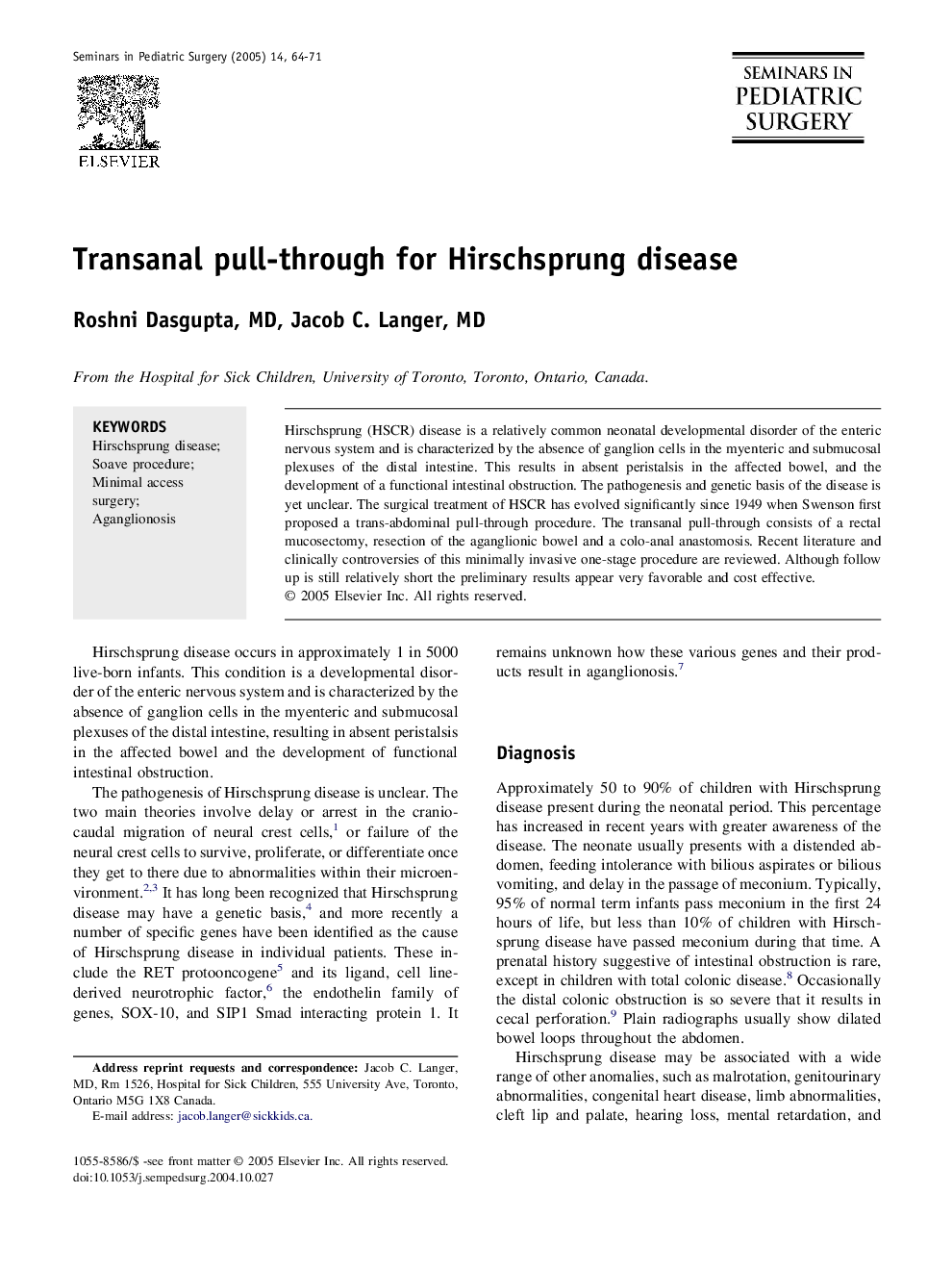| Article ID | Journal | Published Year | Pages | File Type |
|---|---|---|---|---|
| 9377224 | Seminars in Pediatric Surgery | 2005 | 8 Pages |
Abstract
Hirschsprung (HSCR) disease is a relatively common neonatal developmental disorder of the enteric nervous system and is characterized by the absence of ganglion cells in the myenteric and submucosal plexuses of the distal intestine. This results in absent peristalsis in the affected bowel, and the development of a functional intestinal obstruction. The pathogenesis and genetic basis of the disease is yet unclear. The surgical treatment of HSCR has evolved significantly since 1949 when Swenson first proposed a trans-abdominal pull-through procedure. The transanal pull-through consists of a rectal mucosectomy, resection of the aganglionic bowel and a colo-anal anastomosis. Recent literature and clinically controversies of this minimally invasive one-stage procedure are reviewed. Although follow up is still relatively short the preliminary results appear very favorable and cost effective.
Related Topics
Health Sciences
Medicine and Dentistry
Perinatology, Pediatrics and Child Health
Authors
Roshni MD, Jacob C. MD,
